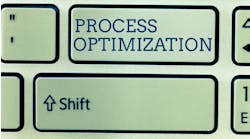Case Study: Harnessing the power of IoT to keep hearts beating
With heart failure being the number one cause of death in Europe, lifesaving equipment is essential. Citycare, a French company that manages some 15,000 defibrillators, simplified its maintenance processes with IoT technology. Find the case study here:
Product malfunctions in the healthcare industry can be the difference between life and death, so monitoring and maintaining equipment is imperative. There has been an increase in the availability of lifesaving medical technology, such as defibrillators, which can restore a heart’s beating via an electric shock. However, regulations for the maintenance of automated external defibrillators (AEDs) is still lacking.
Although defibrillators are only used occasionally, it is still necessary for them to function properly at all times. Emergencies don’t follow schedules. Heart failure is the number one cause of death in Europe and the chance of survival is slim if the nearest defibrillator is malfunctioning. A person’s chance of survival during a heart attack can reach 75% when a shock is administered by an AED within the first four minutes.
Drawbacks of maintaining emergency equipment
As a company that hires out more than 15,000 AEDs and monitors their correct functioning on a daily basis, Citycare is acutely aware of the importance of AED maintenance. Since 2013, its mission has been to simplify how organizations ensure their fleet of AEDs is functioning properly. Defibrillators must be checked every day, given they carry batteries and advanced electronic components. However, this is often not the case in the French market, where 30 to 40% of defibrillators are out of service due to a lack of maintenance.
To combat this, at the end of 2014, Citycare turned to Global System for Mobile communications (GSM) technology with its R'EvolutionBox to remotely retrieve data on the operating status of its defibrillators. This was an effective solution at first, but it quickly proved to be restrictive since the box needed to be fewer than 30 meters from the defibrillator. This left Citycare searching for another technology that would allow the company to consistently monitor the functioning of their AEDs without distance restrictions.
Harnessing the IoT to gain insight
Citycare began using IoT technology to monitor the maintenance of its rented-out AEDs. IoT devices can be connected to a 0G network, which interconnects low-bandwidth, battery-powered devices with low bit rates over long ranges. This type of network is easy to implement due to its low-cost, lightweight and low-powered infrastructure.
After completing its search for an IoT solution, Citycare launched the first Sigfox-connected AED in 2018, which is simple to use, reliable and low maintenance, all critical factors given the vastness of Citycare’s AED fleet. The solution is low-cost, and easy to implement because it doesn’t require any cables or complex integrations. Since the integration of IoT chips onto thousands of its AEDs, Citycare has reaped the following benefits:
The connected AED, regardless of its location, automatically tests itself daily and sends a short message via the integrated transmitter to provide an alert on its operating status.
In case of any anomaly, a notification is sent directly to the customer and Citycare's technical teams to proceed with the replacement of the AED within 24 hours.
A 0G network allows the customer to receive information on the status of the device wherever it is located and provides a shelf-life of more than 10 years, thanks to only sending one short message daily, which requires very little battery power.
Citycare claims it is the only company in the world to have integrated a transmitter inside a defibrillator to facilitate daily updates from its fleet of thousands of AEDs and ensure these life-saving medical devices function correctly when they are needed most.
By Guillaume Fornas, CEO of Citycare



